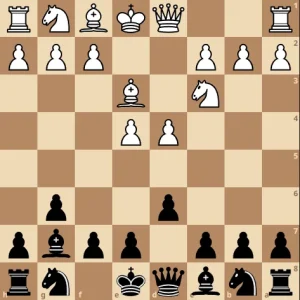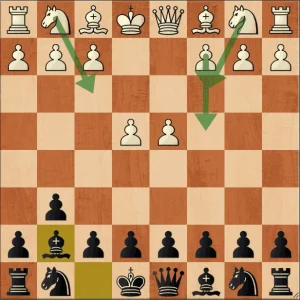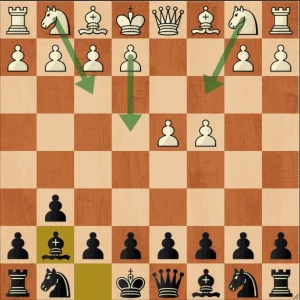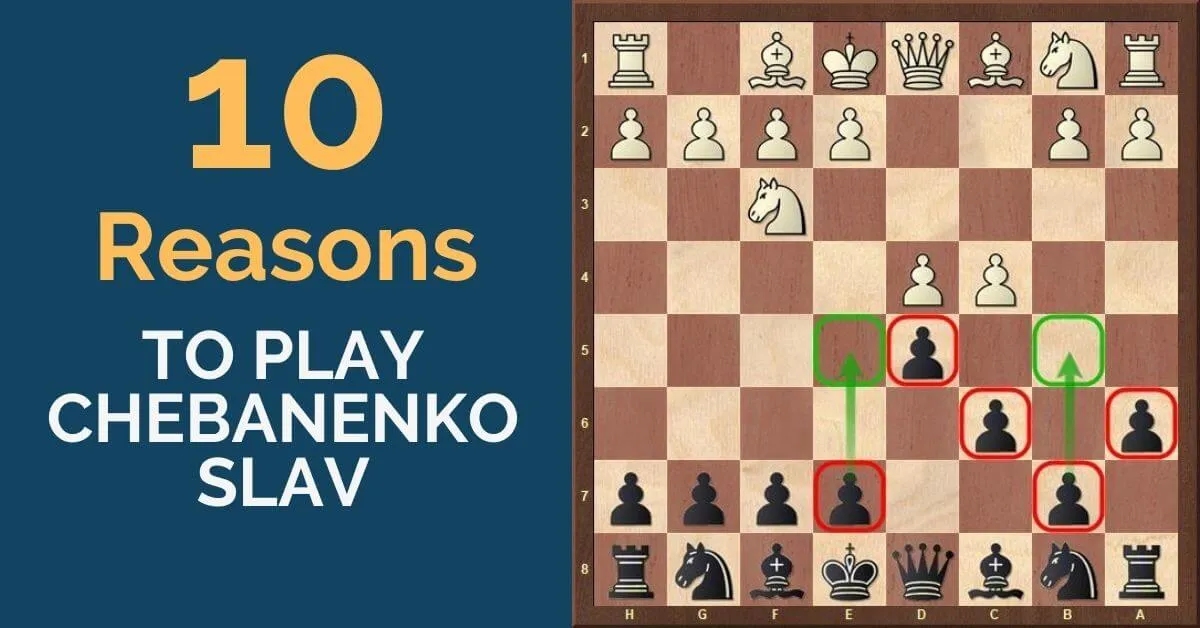Modern Defense: Complete Guide for Black

Modern Defense seeks to fight on its terms because it unbalances the battlefield. The pieces march on to their locations before launching an offensive in the center. This can lead to complex and sharp positions where both sides can attack.
White has the freedom in the center but should be careful. White should not be over-ambitious and look for a knockout blow as a counterattack can destroy white’s position.
The Modern defense is a prudent opening that requires skills such as maneuvering in closed spaces and the correct sense of timing an attack. It is a powerful opening in the right hands and can score you many quick takedowns.
In this comprehensive guide, we will explore the main ideas, plans, and variations of the Modern Defense, equipping you with the tools to use it effectively in your games.
Advantages of the Modern Defense
The Modern Defense offers several strategic advantages for Black:
- Flexible Development: Black can delay the development of the king’s bishop, deciding later where to place it based on White’s setup.
- Transpositions: The opening allows Black to bypass many theoretical lines and potentially transition to other openings like the Pirc Defense, King’s Indian Defense, or Benoni Defense.
- Adaptable Pawn Structures: Black can create a flexible pawn structure that can adapt to different situations.
- A practical advantage of the modern defense is that you can play it against both 1.e4 and 1.d4
White’s Way Forward
Since Black does not compete for any space immediately, White can develop at their own pace and style. There are multiple ways for White to play the position. White can aim to start with d4 or e4 but there are some common must-know structures. We shall discuss these major setups.
Dynamic Setup
This System is characterized by the moves 1.e4 g6 2.d4 Bg7 3.Nc3 d6 4.Be3.

This setup allows White to develop pieces swiftly and target an attack. This is arguably the most dangerous continuation for club players. Players should know their theory here to combat white’s attack. The general plans for countering this aggressive idea are:
- Black’s Countering Strategies
Queenside Pressure: Starting with c6 to support b5, followed by a5 and a4, Black aims to play this in the spirit of opposite side castling. While this is a risky strategy, it can generate enough counterplay to force white to defend.
Bishop Exchange: Playing for Ng4 offers the opportunity to exchange the dark-squared bishops, weakening White’s attack.
Center Challenge: Opting for …Nc6 and …e5 challenges White’s center, opening lines for Black’s pieces. This follows the maxim that a wing attack must be countered with a central strike.
Full Central Mobilization
In this system, White employs c4 and Nc3, followed by Be2 and Be3. This is a calmer way of developing.
In this situation, Black need not take immediate action. Black responds with c6 and b5. This creates a queenside pawn majority resembling the Caro-Kann.
Kingside Fianchetto
This setup involves White playing g3 and Bg2, reinforcing the e4-pawn, and preparing for kingside castling.
Black can choose to transpose into a Pirc Defense with c6 and d5 or adopt a King’s Indian-like setup with e5 and Ne7.
Grabbing Central Space
With a more aggressive approach, White launches with a mass of four pawns, seizing central space. It is intimidating to see a whole mass of pawns starting down the Black’s army. But the idea has its weaknesses.
The primary one is that pawns don’t move backward and hence pieces have to defend the squares behind them. If Black can exploit these weak squares then Black will have the upper hand.
Black can counter with undermining moves like c5 or f5, or opt for a more positional approach with Nd7 and e6.
Direct and Aggressive
Here, White employs f4 and Nf3, followed by Bd3 and e5. This direct approach aims to open up the center and launch an attack on Black’s king.
Black can retaliate with either c5 or e5 or choose a more solid path with Nf6 and Nbd7.
Modern Defense vs 1.e4: An Overview
As previously discussed, you can play the modern defense against both e4 and d4. Although they share many commonalities there are differences to keep in mind. We shall now take a look at how the game can proceed for both sides.
After 1.e4 g6 White has a plethora of options but the most principled way is by occupying the center with d4.
2.d4 Bg7 This is standard tabiya of the Modern Defense starting from 1.e4. White has multiple ways to continue. The major deviations are:
3.c3 / Nc3 / Nf3 / c4

Reference Games
- Solak, D. – Carlsen, M., 0-1, 42nd Olympiad 2016
- Tal, Mihail – Ljubojevic, Ljubomir, 0-1, SWIFT-Chess World Championship, 1987
Modern Defense vs 1.d4: An Overview
Now let us take a look at how the game might proceed if white starts from 1.d4
After 1.d4 g6 2.c4 Now Black fianchettos the bishop 2…Bg7. Now we are at a branching-off point. White can choose to play with e4 or without e4. Both are logical but the more ambitious try is to play with e4 as it grabs space.
3.e4 / Nc3 / Nf3

Reference games
- Babula, Vlastimil – Mamedyarov, Shakhriyar, 0-1, Pardubice Synthesia op, 2007
- Bareev, Evgeny – Morozevich, Alexander, 0-1, Amber-rapid 14th, 2005
You might also like London System with GM Marian Petrov [TCW Academy] as well as Positional Chess Understanding: The Space Advantage.
Conclusion
The main benefit of the Modern Defense is that it gives Black a lot of flexibility and choice. You can transpose to other openings, such as the King’s Indian Defense, Benoni, or the Sicilian, depending on White’s choice and Black’s mood. Black can also choose between different pawn structures. It is an excellent opening choice for club players. The Modern Defense gives you new structures and cuts down the theory. It is suitable for players who like to experiment and improvise, and who are not afraid of taking risks.
https://thechessworld.com/store/product/modern-defense-lemos-formula-with-gm-damian-lemos/










Comments: